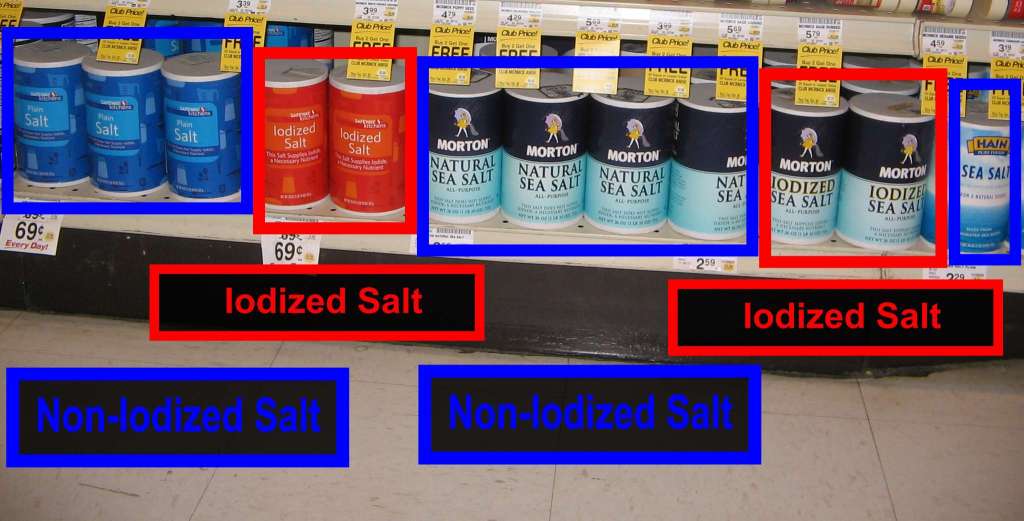Iodized Salt
After scientists figured out the importance of iodine to human health, they eventually decided that the easiest way to increase iodine-deficient populations’ iodine levels was by adding small amounts of this nutrient to salt. While there are better ways to supplement iodine, at least iodized salt provides enough for societies to mostly prevent cretinism and the other diseases of extreme iodine deficiency. In theory.
Now that salt is iodized, our health professionals seem to assume that iodine deficiency is not actually a problem anymore.
IS YOUR SALT ACTUALLY IODIZED?
Only a portion of the salt in the United States is actually iodized today. Iodization slightly changes the salt’s properties. Foodies can taste a subtle difference between iodized and non-iodized salt. Iodized salt is not used for pickling because it changes the color of the pickled vegetables.

Safeway’s blue and red salt packaging clearly indicate that they are different products. Morton’s “Sea Salt” packaging is almost the same between the iodized and non-iodized versions.
Even if your salt is iodized, some of the iodine will oxidize and float away after the package is opened:
An opened package of table salt with iodide may rapidly lose its iodine content through the process of oxidation and iodine sublimation.[2]
–Iodised Salt (wikipedia, emphasis added)
It is NOT a good practice to assume that you get enough iodine just because some of your salt might possibly have iodine in it. Many of us need more iodine than fortified salt can possibly provide.
Do Thai people better appreciate the importance of Iodine than most? (An Anecdote)
A few years back, I met a woman from Thailand while she was visiting Arizona. I watched as she prepared food at her apartment. She filled the sink with water, sprinkled in some salt, and proceeded to rinse the vegetables.
I asked why she sprinkled salt in the sink. She indicated that this was to disinfect the vegetables, with the iodine in the salt. I looked at the salt container she’d used, and pointed out that the salt did not have any iodine in it.
The Thai King is an engineer, and instituted a program to help increase the Thai people’s iodine intake to sufficient levels with iodine-fortified salt. They also have public-awareness programs to teach the importance of adequate iodine consumption.
Research in Thailand found that seafood consumption was a better way to get iodine than relying on iodine-fortified salt:
A higher frequency of seafood meals was a significant predictor of [urinary iodine] in both groups, but household use of iodized salt was not. These data suggest the median [urinary iodine] in school-aged children should not be used as a surrogate for monitoring iodine status in pregnancy in central Thailand; pregnant women should be directly monitored.
–Urinary Iodine Concentrations Indicate Iodine Deficiency in Pregnant Thai Women but Iodine Sufficiency in Their School-Aged Children [pdf] (emphasis added)
Thailand changed their rules for iodizing salt in 2011, so perhaps conditions in that country have changed: Just the right amount: a new process of iodising salt in Thailand ( 24 October 2011).
